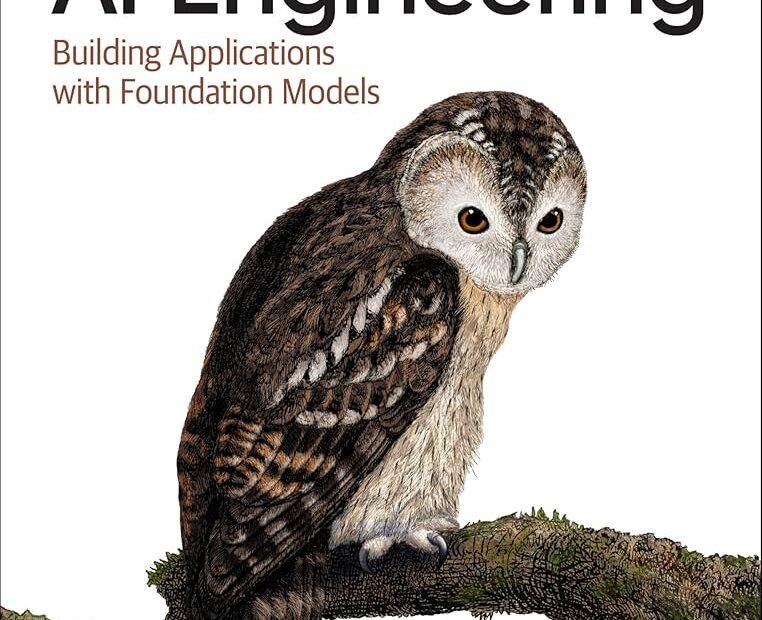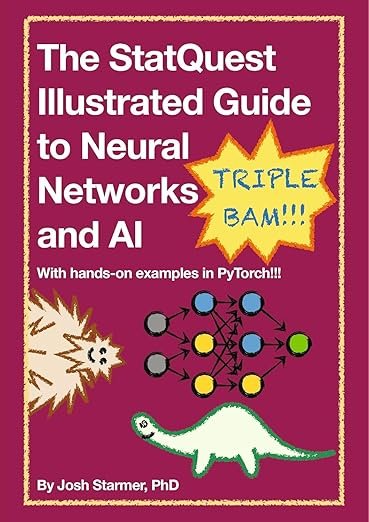- Stars:
- Pages: 528 Pages
- Time to Read: 10 hours
- Authors: Chip Huyen
- Type of Book: Artificial Intelligence
TL;DR
Chip Huyen’s AI Engineering is a landmark text that perfectly captures the current zeitgeist of AI development. This is not another book about training models from scratch; it is the essential, pragmatic handbook for the new discipline of building robust, valuable applications on top of existing foundation models. Densely packed with timely insights, the book champions an “Evaluation-Driven Development” approach, arguing that in an era of powerful but unpredictable models, the ability to effectively evaluate and guide their output is the most critical skill. It is a crystal-clear, strategic guide to the modern AI stack and a must-read for any engineer, product manager, or technical leader building in this space.
What is the book about?
This book defines and explores the emerging field of AI Engineering, distinguishing it from traditional Machine Learning Engineering. The central premise is that for most developers, the challenge is no longer about creating models but about effectively harnessing the immense power of pre-trained foundation models.
Huyen provides a comprehensive roadmap for the entire application lifecycle. The journey begins with what she posits is the most important step: evaluation. The book introduces powerful concepts like Evaluation-Driven Development (EDD) and the use of AI-as-a-judge to “domesticate” the raw capabilities of foundation models. From there, it dives into the practical toolkit required by modern developers. It provides clear frameworks for understanding and implementing key techniques like prompt engineering, Retrieval-Augmented Generation (RAG), fine-tuning, and agents. Crucially, it clarifies the strategic trade-offs, such as using RAGRAGRAGRAG to address knowledge gaps versus using fine-tuning to correct behavioral issues. The book is intentionally light on code and complex formulas, focusing instead on mental models, architectural patterns, and the engineering wisdom needed to navigate challenges like cost, latency, and reliability.
Key Takeaways!
- The Rise of AI Engineering: The book makes a compelling case for a new engineering discipline focused on system design, evaluation, and integration using foundation models, as opposed to the low-level model training of traditional ML.
- Evaluation is the Cornerstone: A core theme is that building a robust evaluation pipeline is the most critical part of developing a reliable AI application. The book provides practical frameworks for measuring and improving the performance of open-ended, generative systems.
- A Practical Toolkit for Modern Builders: Readers will gain a deep, strategic understanding of the most important techniques in the field. The book provides clarity on what tools to use and when, covering everything from basic prompt design to optimizing model inference.
- Strategic, Not Academic: This is a book for practitioners. It distills years of real-world experience into actionable advice and high-level insights, making it invaluable for making sound architectural and product decisions without getting lost in research-level details.
Worth the Read?
Read it. Without hesitation.
This book is a timely and incredibly valuable resource that provides a much-needed framework for thinking about and building with modern AI. While dense with information, its clarity and focus on fundamentals make it an enduring guide in a rapidly changing field.
Read this book if:
- You are a software engineer or developer building applications that leverage LLMs.
- You are a product manager or technical leader responsible for AI strategy and execution.
- You want a comprehensive overview of the practical challenges and solutions in the AI application lifecycle.
- You need to make informed decisions about when to use techniques like RAGRAGRAGRAG, fine-tuning, or prompt engineering.
Skip this book if:
- You are an AI researcher looking for a deep dive into novel model architectures or training algorithms.
- You are looking for a beginner’s, step-by-step coding tutorial.
For anyone serious about building real-world applications with foundation models, Chip Huyen’s AI Engineering is the definitive guide for 2025 and beyond.
Join to get sneak peek into what's happening
I write about books, experiences, product, UX, EdTech, early stage growth, validation – mostly tech. Subscribe if these topics interest you. Once every 15 days emailer. I promise – No spam. (I am known for it otherwise) 😉




